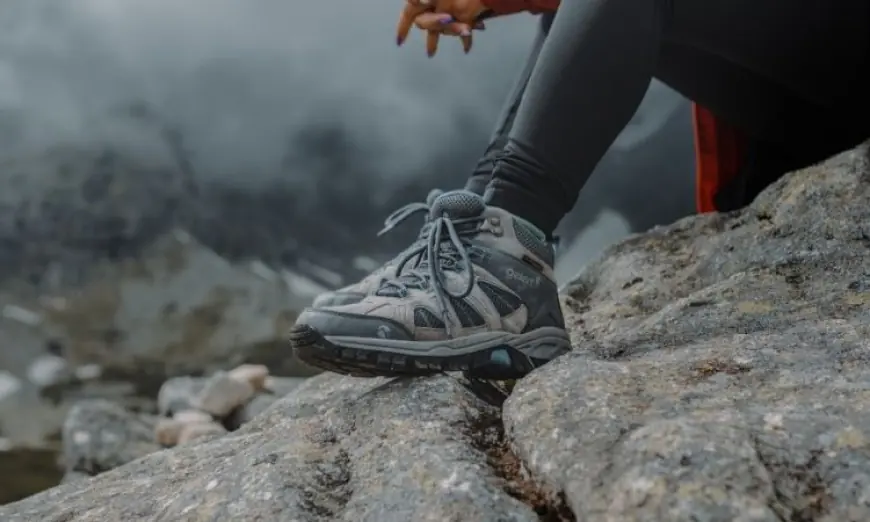Best Hiking Footwear for Every Trail Adventure

Every great outdoor journey begins with a single step—but the quality of that step can make or break the adventure. Hiking isn’t just a walk in the park. It’s a test of endurance, stability, and grit. That’s why the footwear you choose plays a defining role in your trail experience. Whether you're conquering rocky switchbacks, navigating damp forest floors, or scrambling up alpine peaks, your shoes are your most reliable partner. And in the world of outdoor gear, nothing screams ‘prepared’ like a solid, well-fitted, trail-ready hiking boot or shoe.
Backed by Insight: Expert Market Research on Hiking Footwear
According to Expert Market Research, the global enthusiasm for hiking and outdoor exploration has fueled growing interest in specialized hiking footwear industry that blends performance with comfort. Hikers today are not just looking for sturdy boots—they want breathable fabrics, advanced traction technology, and ergonomic soles that adapt to varying terrains. The report also highlights how consumer choices are shifting toward hybrid designs that offer both the durability of a boot and the lightweight agility of a shoe. This reflects a broader lifestyle change where functionality, innovation, and outdoor comfort meet. As hiking becomes a preferred mode of wellness and escape, the emphasis on versatile and performance-driven hiking footwear is stronger than ever.
Boots, Shoes, or Hybrids: Which Trail Companion is Right for You?
Deciding between hiking boots, trail shoes, or hybrid footwear is a personal choice—and one that depends heavily on the terrain, distance, and weather conditions. For rugged, uneven landscapes with unpredictable conditions, mid-to-high ankle boots offer superior ankle support and protection. They're especially ideal for backpacking trips where you're carrying heavier loads. However, if you're venturing into lowland trails, desert flats, or well-groomed paths, trail shoes or lightweight hikers might be your best bet. They’re flexible, breathable, and allow for faster, more agile movement.
Hybrid hiking footwear, combining the support of a boot with the ease of a sneaker, is growing in popularity. They're designed for weekend warriors and seasoned hikers who want a shoe that can handle both city sidewalks and mountain trails. These are particularly valuable for travelers who want to pack light without compromising performance.
Materials That Go the Distance
Your choice of hiking footwear materials has a direct impact on performance and comfort. Leather remains a classic for its durability and water resistance, but it does take time to break in. For faster hikes or humid climates, synthetic blends are a go-to. They’re lighter, dry quicker, and offer better ventilation, reducing the chance of blisters. Then there are waterproof membranes like Gore-Tex, which keep feet dry during stream crossings or rainy hikes, though they may sacrifice breathability in hotter climates.
The insole and midsole—often overlooked—are essential to shock absorption and arch support. EVA midsoles are lightweight and flexible, while PU midsoles offer more support and durability. Outsoles, on the other hand, must provide reliable traction. Deep, multidirectional lugs ensure grip on everything from loose gravel to slick roots.
Comfort is Not Optional: Fit and Function First
A common mistake many beginners make is choosing hiking footwear based on appearance rather than fit. A stylish pair of boots won’t feel so great when you’re dealing with heel blisters or blackened toenails at mile five. A good fit ensures your heel stays in place, your toes have enough wiggle room, and your arches feel supported.
Try hiking shoes on at the end of the day when your feet are slightly swollen to get a true fit. Wear the same socks you’ll use on your hike, and test them by walking on inclines if possible. Don’t forget to break in your new footwear before the main hike—short walks or day hikes help mold them to your foot.
Keeping Your Footwear Adventure-Ready
Hiking shoes are an investment in comfort and safety, and they demand a little upkeep. After a muddy trail, don’t just toss them into a dark corner of the closet. Clean off the dirt, remove the insoles, and air-dry them thoroughly. For leather boots, use a conditioner to prevent cracking and maintain waterproofing. For synthetic shoes, a gentle brush and soap wash work wonders.
Rotating between two pairs for frequent hikers is a smart move. This gives each pair time to air out and recover, reducing odor and wear. Proper storage—dry, cool, and clean—is just as essential as the hike itself.
Finding Balance Between Style and Substance
While function comes first, modern hiking footwear no longer compromises on style. From sleek urban-inspired designs to bold trail-specific aesthetics, there's something for every personality. This dual-purpose design approach means you can walk off the trail and into town without looking out of place. The integration of vibrant colors, lightweight soles, and minimalistic patterns makes hiking footwear both fashionable and functional—perfect for the adventurer who lives both in the wild and in the city.
Your Feet Deserve the Best, Always
Whether you're an occasional nature lover or a hardcore mountain explorer, investing in the right hiking footwear transforms your trail experience from tolerable to unforgettable. It's not just about looking the part—it's about comfort, safety, and freedom. The world is filled with unbeaten paths, and each one starts at your feet. With the right shoes, there’s no trail too steep, no journey too long, and no summit out of reach.
Let your next step be one you’re proud of. Equip yourself with footwear that respects the terrain, supports your goals, and pushes your adventure boundaries further. After all, a journey of a thousand miles begins with the right pair of hiking shoes.
What's Your Reaction?
 Like
0
Like
0
 Dislike
0
Dislike
0
 Love
0
Love
0
 Funny
0
Funny
0
 Angry
0
Angry
0
 Sad
0
Sad
0
 Wow
0
Wow
0


















































